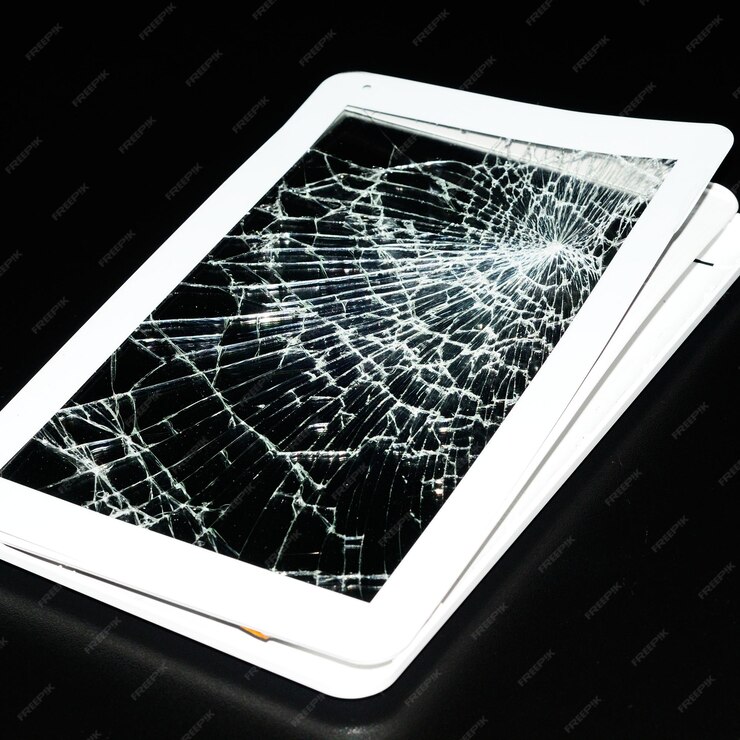An iPad can be damaged by physical impacts, exposure to water, extreme temperatures, and software malfunctions. It’s important to protect your device from these potential hazards to ensure its longevity and performance.
Physical impacts such as drops or bumps can cause cracks or damage to the internal components of the iPad. Exposure to water or moisture can lead to corrosion and electrical issues. Extreme temperatures, both hot and cold, can affect the battery life and overall functionality of the device.
Lastly, software malfunctions, such as viruses or corrupted files, can disrupt the iPad’s operation. By being mindful of these potential risks, you can take proactive measures to safeguard your iPad and prolong its lifespan.
What Can Damage An iPad ?

It’s important to understand the potential threats that can damage an iPad in order to take necessary precautions. Knowing how physical impact, liquid exposure, and extreme temperatures can harm your device will help you safeguard it from these risks.
Physical Impact
An iPad is susceptible to damage from physical impact, such as drops, knocks, or bumps. The screen and internal components can be easily affected, leading to cracks, dents, or malfunctioning parts. It’s essential to handle the device with care and consider using protective cases or covers to minimize the risk of impact damage.
Liquid Exposure
Exposure to liquids is a common cause of damage to iPads. Spills of water, coffee, or other liquids can seep into the device, causing corrosion and electrical shorts. As a result, the functionality of the iPad can be severely compromised. In case of liquid exposure, it is crucial to power off the device immediately and seek professional assistance to minimize the damage.
Extreme Temperatures
Extreme temperatures can cause significant harm to your iPad. Exposing the device to high temperatures, such as leaving it in a hot car or direct sunlight, can lead to overheating and potential damage to the internal components. Similarly, exposing the iPad to very cold temperatures can affect its battery life and overall performance. It’s important to store the device in a moderate temperature environment to prevent any adverse effects.
Common Causes Of iPad Damage
An iPad is a powerful and versatile device that has become an essential tool for many individuals and businesses. However, like any electronic device, iPads are susceptible to damage from a variety of common causes. Understanding these factors can help users take preventive measures to protect their devices and minimize the risk of damage.
Drop Accidents
One of the most common causes of iPad damage is accidental drops. Whether it slips from your hands or falls off a table, the impact can result in cracked screens, dents, or internal hardware damage. Using a protective case or cover can provide some cushioning and minimize the impact of an accidental drop on the iPad.
Spills And Moisture
Spills and moisture pose a significant threat to iPads. Accidental spills of water, coffee, or other liquids can seep into the device, causing damage to the internal components and potentially leading to a malfunction. Avoid using your iPad near liquids and consider investing in a waterproof case for added protection.
Leaving Ipad In Direct Sunlight
Exposing your iPad to direct sunlight for prolonged periods can result in overheating and potential damage to the device’s battery and internal components. Store your iPad in a cool, shaded area when not in use to prevent exposure to excessive heat.
Effects Of iPad Damage
When an iPad is damaged, it can have various adverse effects on its functionality and performance. Understanding these effects is crucial for both preventing damage and knowing how to address it when it occurs.
Screen Cracks And Breakage
Screen cracks and breakage can significantly impair the usability of an iPad. Cracked screens not only hinder visibility but also expose the internal components to potential damage. Even hairline fractures can worsen over time, leading to complete screen failure.
Water Damage And Corrosion
Water damage and corrosion can have devastating effects on an iPad. Exposure to moisture can cause internal components to short-circuit, resulting in malfunction. Corrosion can eat away at the delicate electronic circuitry, leading to irreversible damage.
Internal Component Malfunction
Internal component malfunction can occur as a result of physical trauma or gradual wear and tear. Damage to internal components, such as the battery, motherboard, or connectors, can disrupt the iPad’s functionality and may lead to complete device failure.
Preventing iPad Damage
If you own an iPad, you know how important it is to keep it in good condition. Preventing iPad damage is essential to ensuring the longevity and functionality of your device. Here are some key steps to take to protect your iPad from potential harm:
Use Protective Cases
Protective cases are an essential investment for safeguarding your iPad against accidental drops and bumps. In addition to mitigating physical damage, cases also provide a layer of defense against scratches and dings. Look for a high-quality, shock-absorbent case to ensure your iPad stays protected in various situations.
Avoid Liquid Exposure
An iPad’s worst enemy is liquid exposure. Water and other liquids can cause irreversible damage to the internal components of your iPad. Be proactive by keeping drinks and liquids away from your device. In the event of an accidental spill, promptly wipe the iPad dry and thoroughly clean any residue to prevent potential long-term harm.
Store iPad In A Safe Environment
When not in use, it’s crucial to store your iPad in a safe environment. Avoid leaving it in areas where it can easily be knocked or exposed to extreme temperatures. A secure and stable location can help prevent accidental damage and extend the lifespan of your device.
Repairing iPad Damage
Professional Repair Services
When your iPad suffers damage, such as a cracked screen or water damage, seeking professional repair services is often the best course of action. Professional repair services have the expertise and tools needed to properly diagnose and repair a wide range of iPad issues. Additionally, they use genuine replacement parts to ensure the longevity and performance of your device. Before choosing a repair service, it’s essential to research their reputation and customer feedback to ensure you are entrusting your iPad to a reliable provider.
Diy Repair Methods
For minor issues, such as scratches or scuffs, there are some DIY repair methods you can try. However, it’s crucial to proceed with caution as attempting DIY repairs can potentially void your iPad’s warranty if not done correctly. For minor scratches, you can use a screen protector to conceal the damage. Additionally, for small scuffs on the body of the iPad, applying a protective case can minimize the visibility of the damage. It’s important to note that DIY methods should only be attempted for superficial damage and not for significant hardware or software issues.
Applecare And Warranty Options
Apple offers AppleCare protection plans and limited warranties for iPads, offering consumers peace of mind in case of damage. An AppleCare plan extends the warranty and provides access to technical support and additional coverage for accidental damage. It is essential to be aware of the coverage and terms of AppleCare to ensure your specific needs are met. Additionally, if your iPad is still within its original warranty period, you may be eligible for support and potential repair services at an Apple Store or authorized service provider.
Frequently Asked Questions:
What Common Factors Can Damage An iPad ?
Many common factors that can damage an iPad include drops, spills, extreme temperatures, and exposure to dust and dirt.
How Does Dropping An iPad Contribute To Damage?
Dropping an iPad can cause physical trauma to the device, leading to cracked screens, internal component damage, and malfunctioning hardware.
Can Exposure To Extreme Temperatures Harm An iPad ?
Yes, exposure to extreme temperatures, whether hot or cold, can negatively impact an iPad’s battery life and overall performance. It’s important to avoid such environments.
How Does Liquid Contact Affect An iPad ?
Liquid contact can lead to corrosion of internal components, short circuits, and irreversible damage to an iPad’s circuitry and functionality.
Conclusion
It’s important to protect your iPad from potential damage. By understanding the common causes of damage, such as accidental drops and liquid spills, you can take proactive measures to keep your device safe. Investing in a protective case and being mindful of your surroundings can go a long way in preserving the longevity of your iPad.

